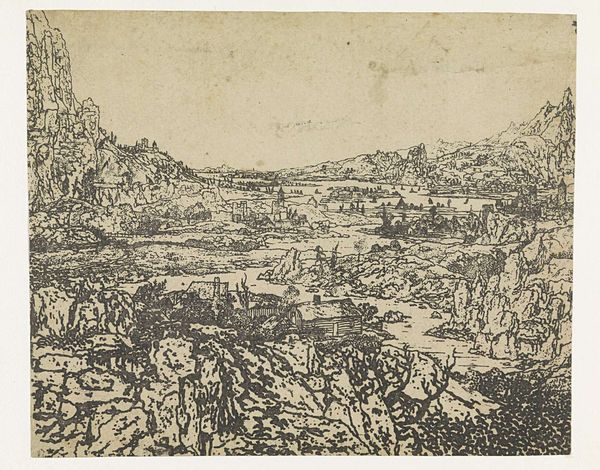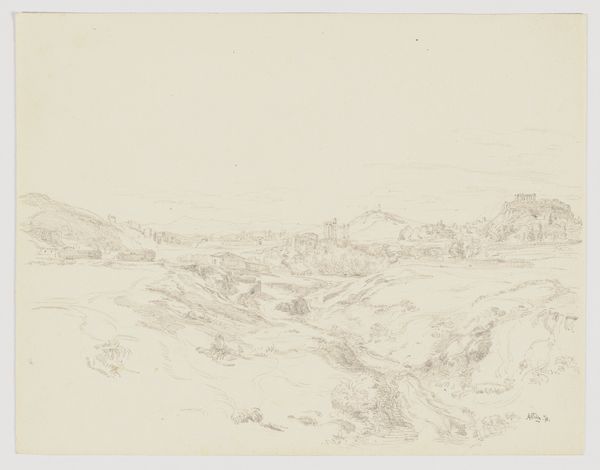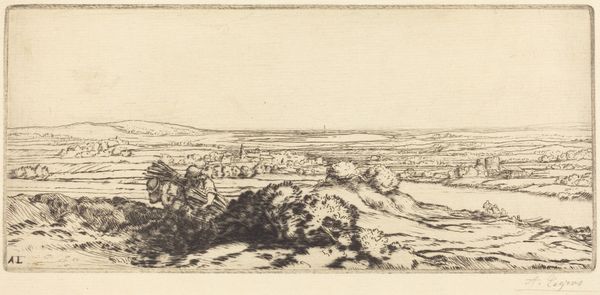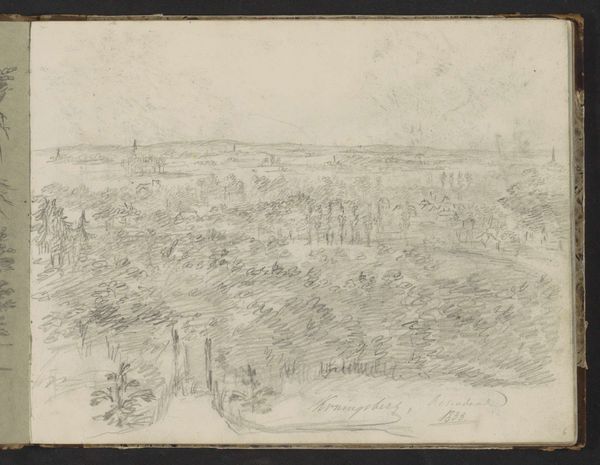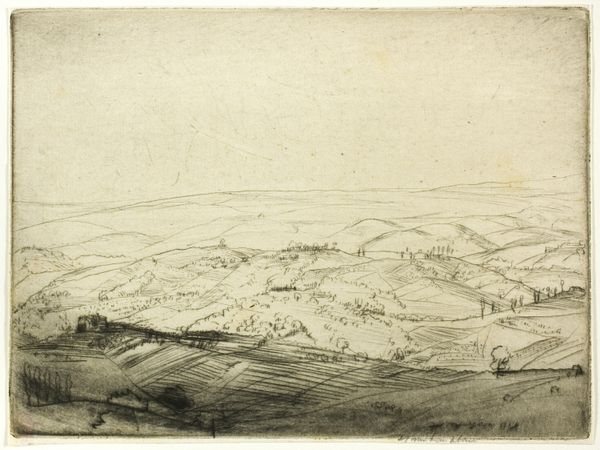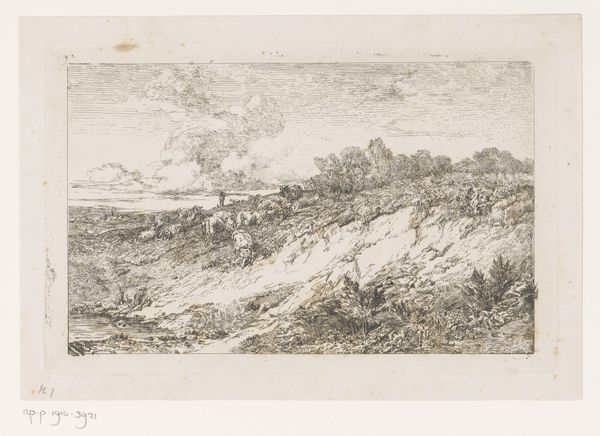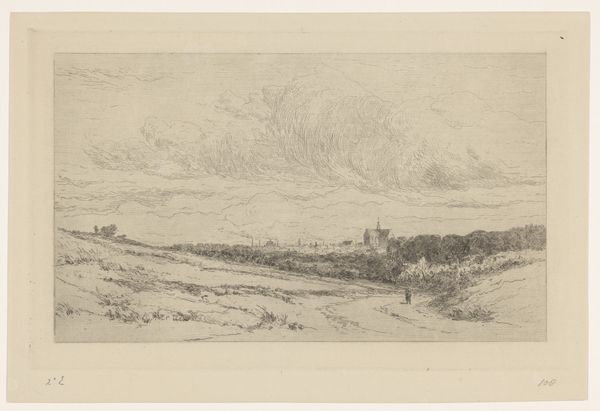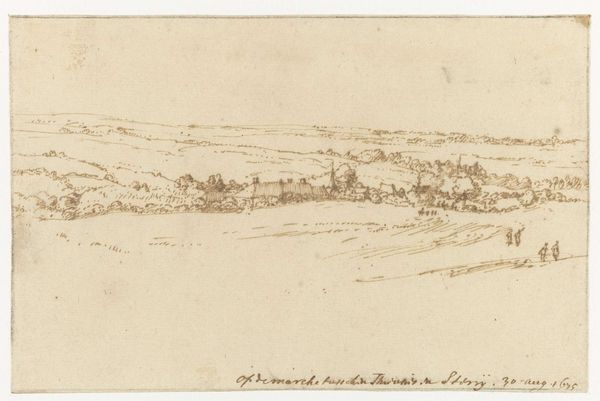
drawing, etching, ink
#
drawing
#
baroque
#
dutch-golden-age
#
etching
#
landscape
#
etching
#
ink
Dimensions: height 105 mm, width 170 mm
Copyright: Rijks Museum: Open Domain
Curator: Today we're looking at "Gezicht op legerplaats bij het Klooster Bethlehem," or "View of a Military Encampment near Bethlehem Monastery," a drawing and etching in ink by Constantijn (II) Huygens, possibly from around 1675-1677. Editor: My first impression is a kind of frenetic energy, despite the muted palette. The lines are so active, almost scribbled, conveying a bustling, transient scene. Curator: Indeed, Huygens captures the transience well. The monastery, of course, is Bethlehem, a place with profound spiritual connotations, and then juxtaposed to this we see a very earthly, temporal military encampment. Bethlehem is a symbol of birth and renewal, but also of historical conflict, the birth of a messiah against a backdrop of political strife. Editor: And the material conditions support that tension, don't they? Etching allows for a reproduction, a democratization of the image, in stark contrast to the unique spiritual value Bethlehem signifies. Plus, ink suggests a readily available, portable medium – ideal for capturing fleeting moments on the go, like a quick sketch of an army on the move. It makes you wonder about Huygens’s access and engagement. Was he sympathetic to the military presence? Or was he perhaps commissioned? Curator: It invites those questions, doesn't it? In that respect, I’d also consider what an army might symbolically stand for, in connection with the image of the Monastery. We're looking at a suggestion of the ongoing battle between secular and sacred powers. Is there conflict or harmony here? The Church offered spiritual defense while the army offered more physical, worldly defense of the peace at the time. Editor: Or maybe even both, or a critique of them both, competing for resources and social dominance. And it makes you think about the paper it's printed on, sourced perhaps through trade routes linked to the very military actions he portrays. Curator: You know, this gives me a fresh appreciation for how Huygens' choice of subject and technique adds such complexity to an otherwise simple landscape scene. Editor: Yes, looking beyond the surface reveals so much about the intersection of materials, labour, religion and conflict in that period.
Comments
No comments
Be the first to comment and join the conversation on the ultimate creative platform.

